How Hay is Made for Horses
Have you ever wondered how hay gets from the field to your horse’s feeder? Find out in our slideshow.
- Topics: Farm and Barn, Hay, Nutrition, Pasture & Forage Management, Pastures, Slideshow
Share
ADVERTISEMENT
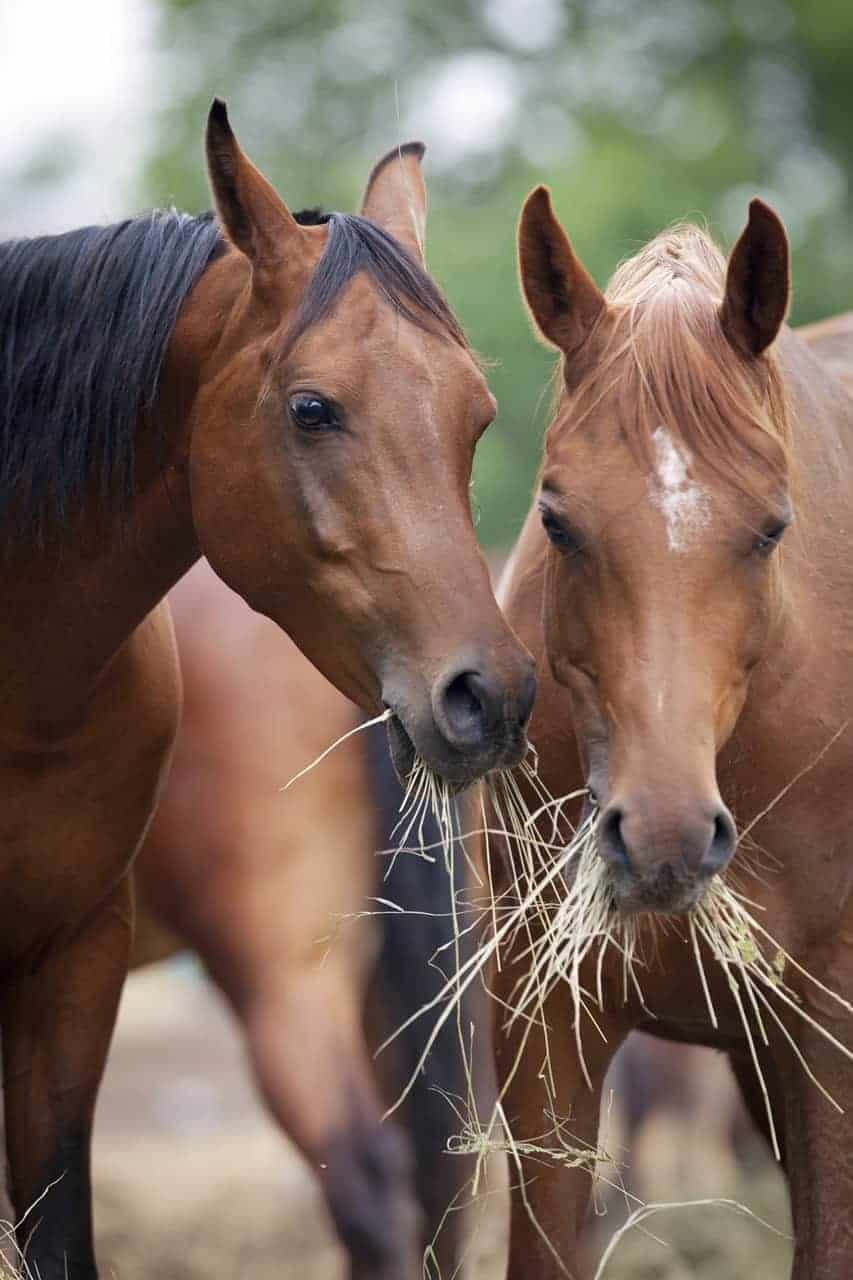
Hay is for Horses
Hay is one of horses' primary sources of forage—the most important part of the equine diet. An average-sized horse eats approximately 4 tons (8,000 pounds) of hay per year. | Photo: Thinkstock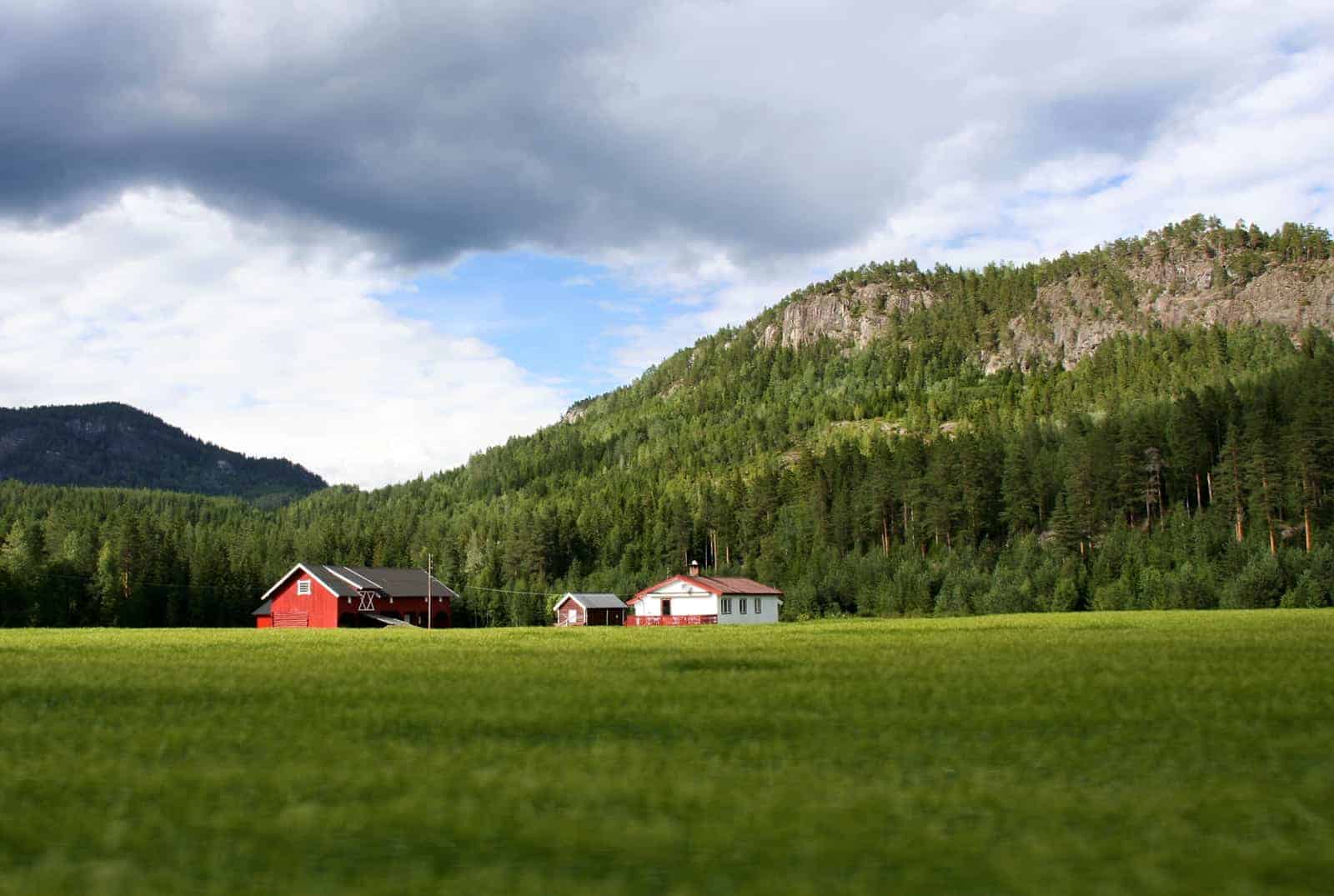
Healthy Hayfields
Hayfields comprise nutritious grasses and/or legumes (such as alfalfa), and the specific types grown and harvested vary by region and market demand. Hay is a perennial crop, which means it doesn’t require replanting each year. Healthy horse hayfields ideally contain few to no weeds and are sometimes certified as “weed free.” Fertilizer is also used on growing grass and legume fields in conventional hay production. | Photo: Thinkstock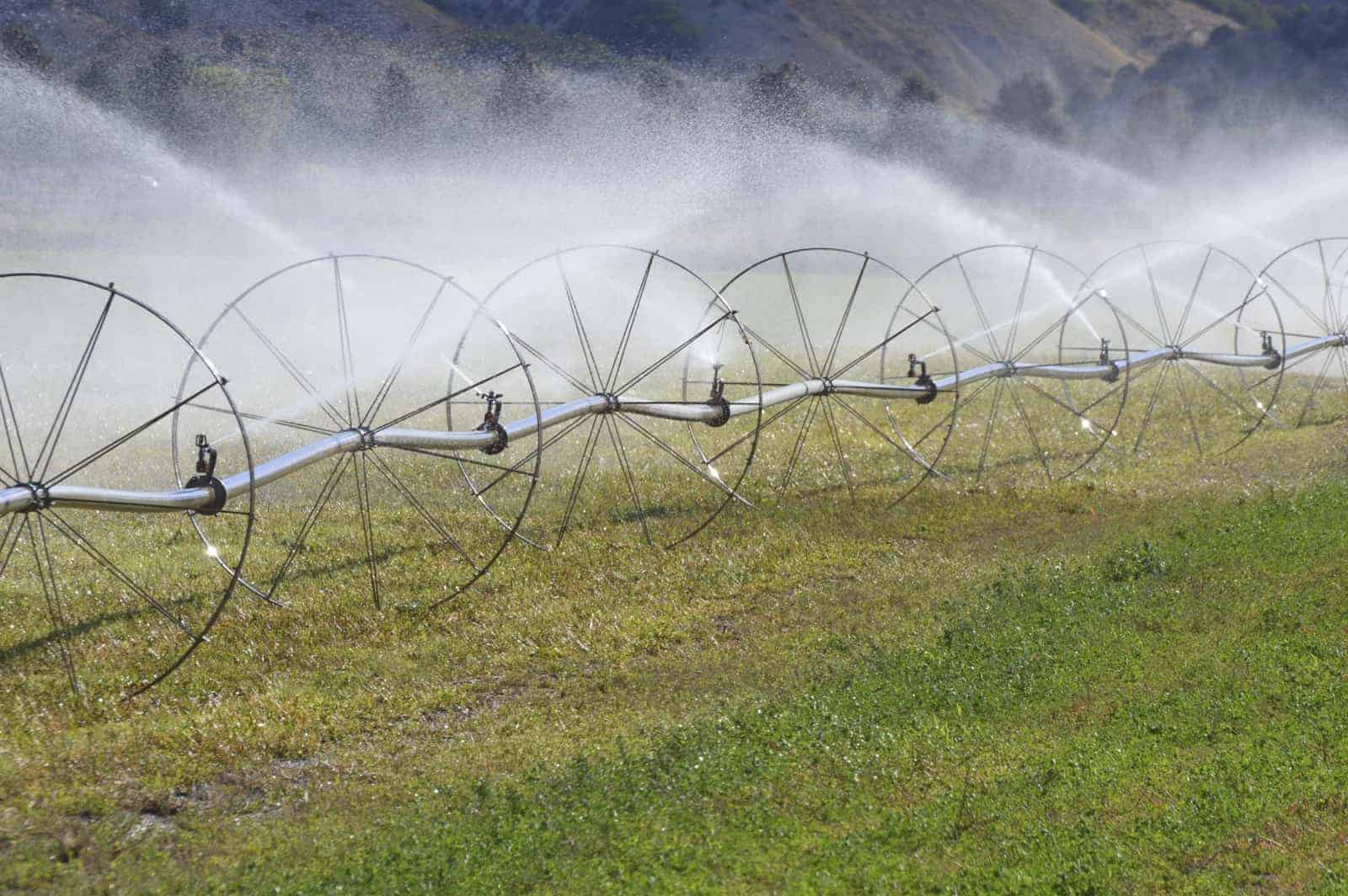
Irrigation
Some areas of the country, especially those with arid climates, require additional irrigation to water hayfields. The cost of irrigation equipment and electricity to run pumps adds to the overall cost of hay production. | Photo: Thinkstock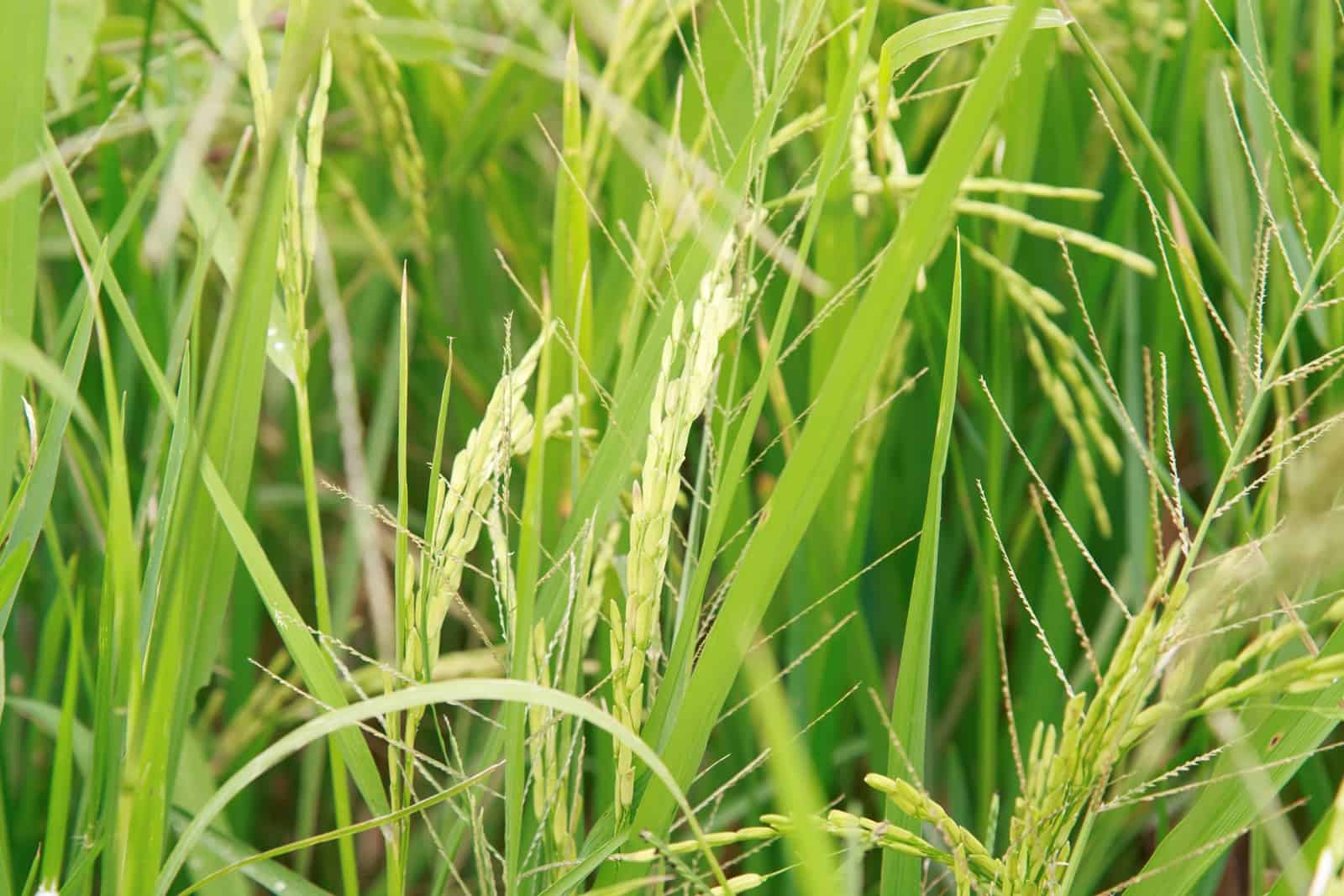
Grass Ready to Cut
Hay is usually ready to cut, and most nutritious, when the grass (pictured) or legume is starting to form seed heads. For the hay farmer, properly timing the cut is everything when it comes to quality. | Photo: Thinkstock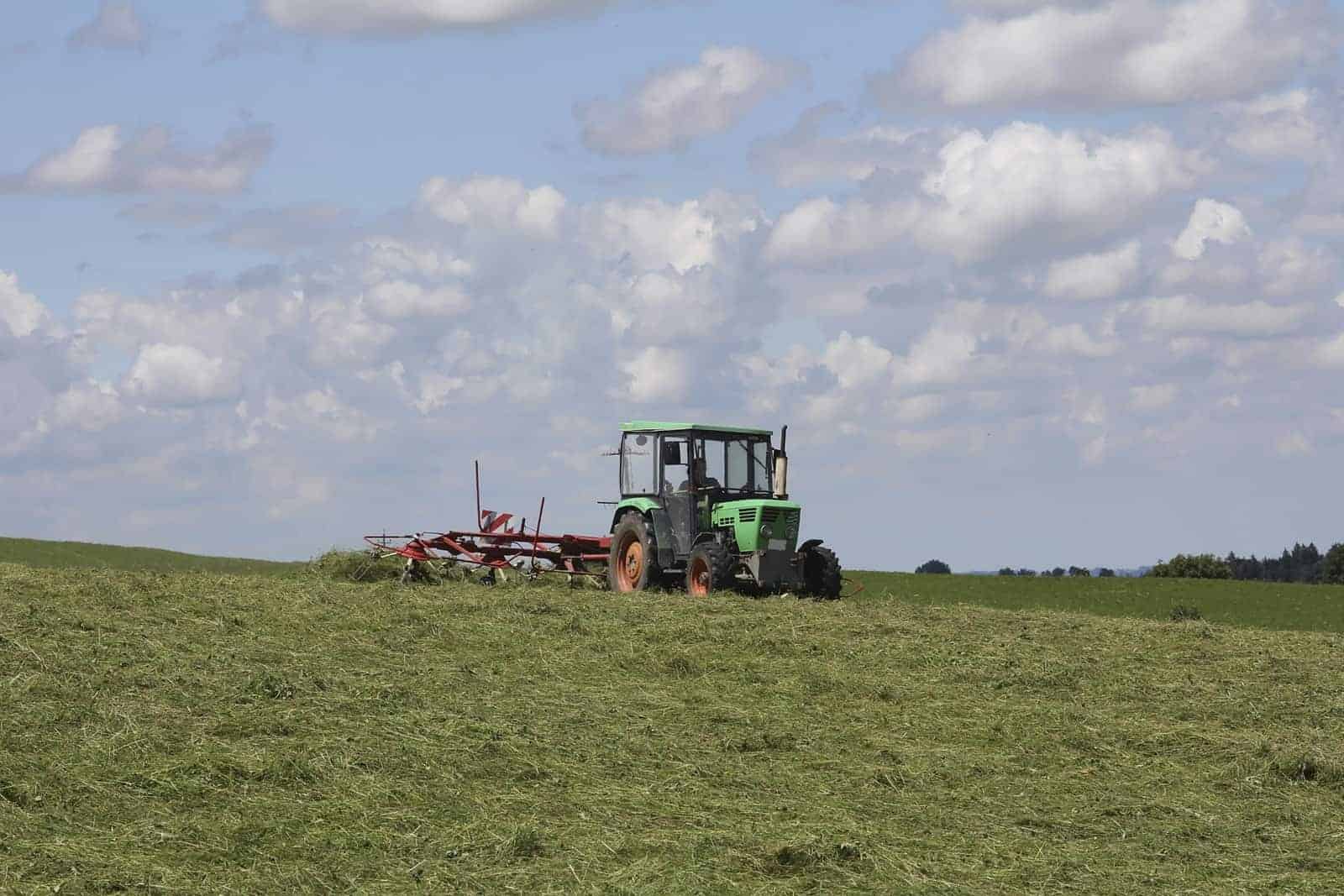
Mowing Hay
After hay is cut or mowed, it is cured (dried) and raked into windrows. Or, a swather (also known as a “windrower”) is used to both cut and place hay in windrows to cure. Many fields produce two, three, or sometimes even more cuttings per year, depending on their health and the weather. | Photo: Thinkstock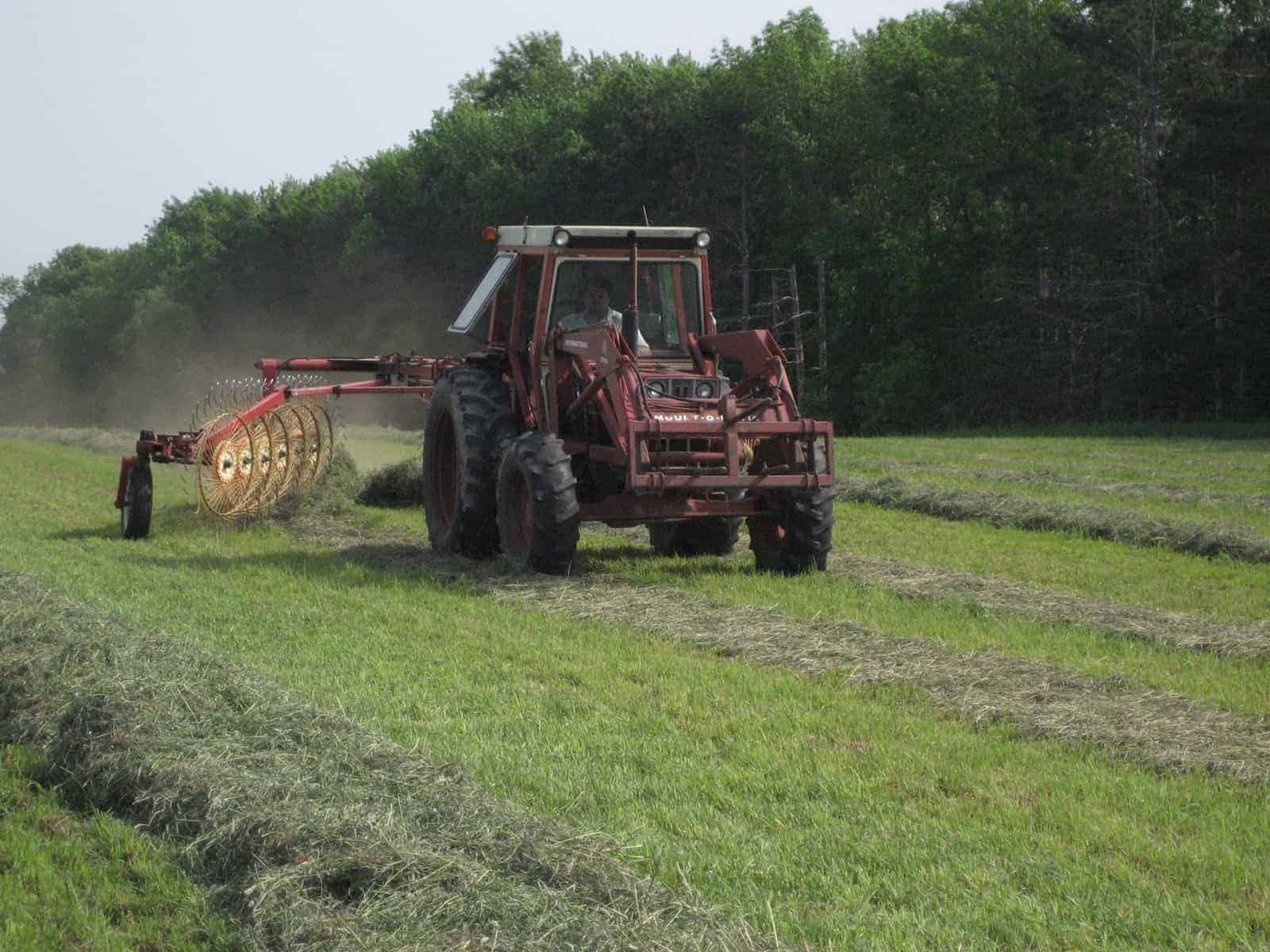
Raking Hay
Hay is often raked into windrows to dry after cutting. Hay that is cured for too long can over dry, bleach, and lose nutrition. | Photo: Courtesy Dr. Krishona Martinson/University of Minnesota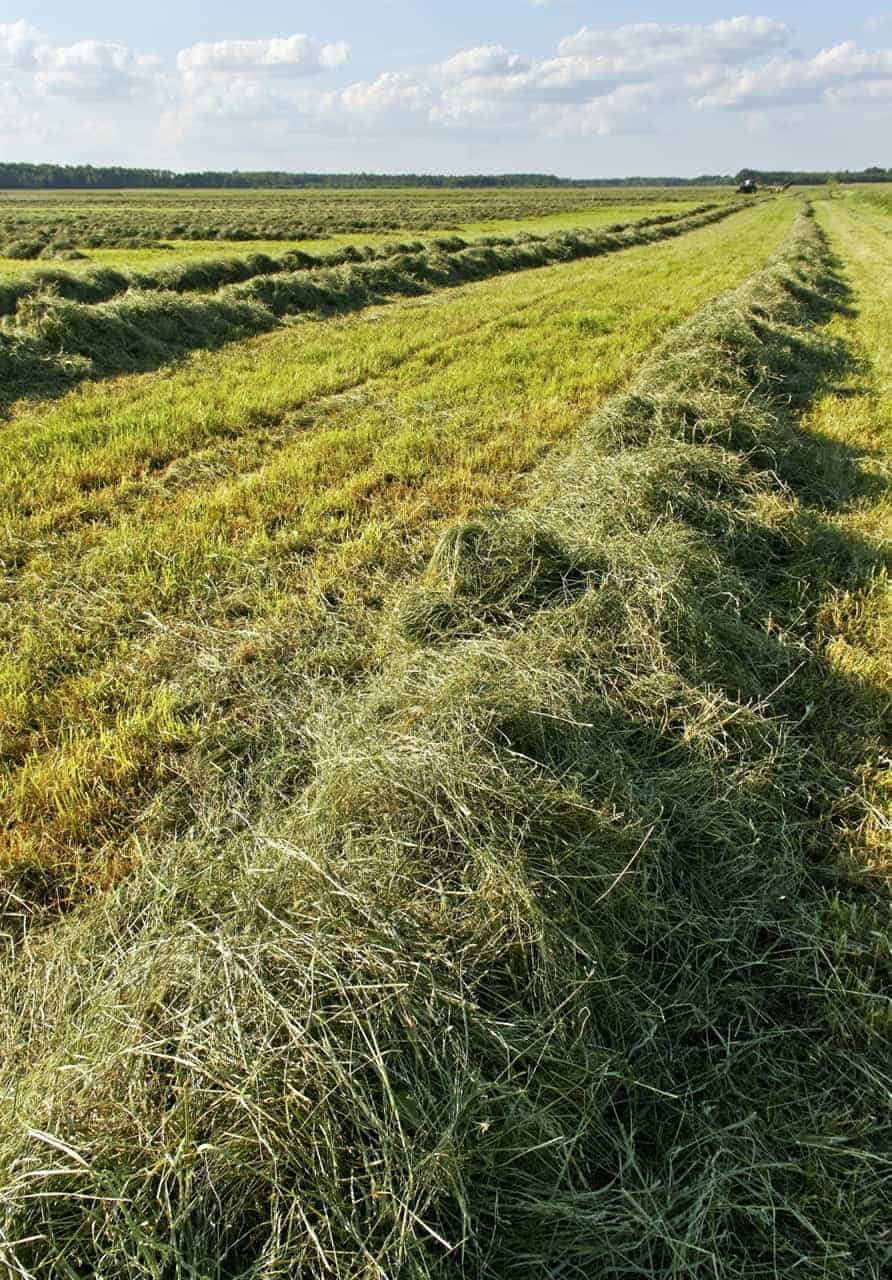
Windrows
This is an example of hay curing in windrows. Once hay is cut, farmers are in a race against Mother Nature: If hay is rained on as it’s curing, it must be turned and dried again, adding time to the hay making process. This also reduces the hay’s nutritional value and can make it unsuitable for horses. | Photo: Thinkstock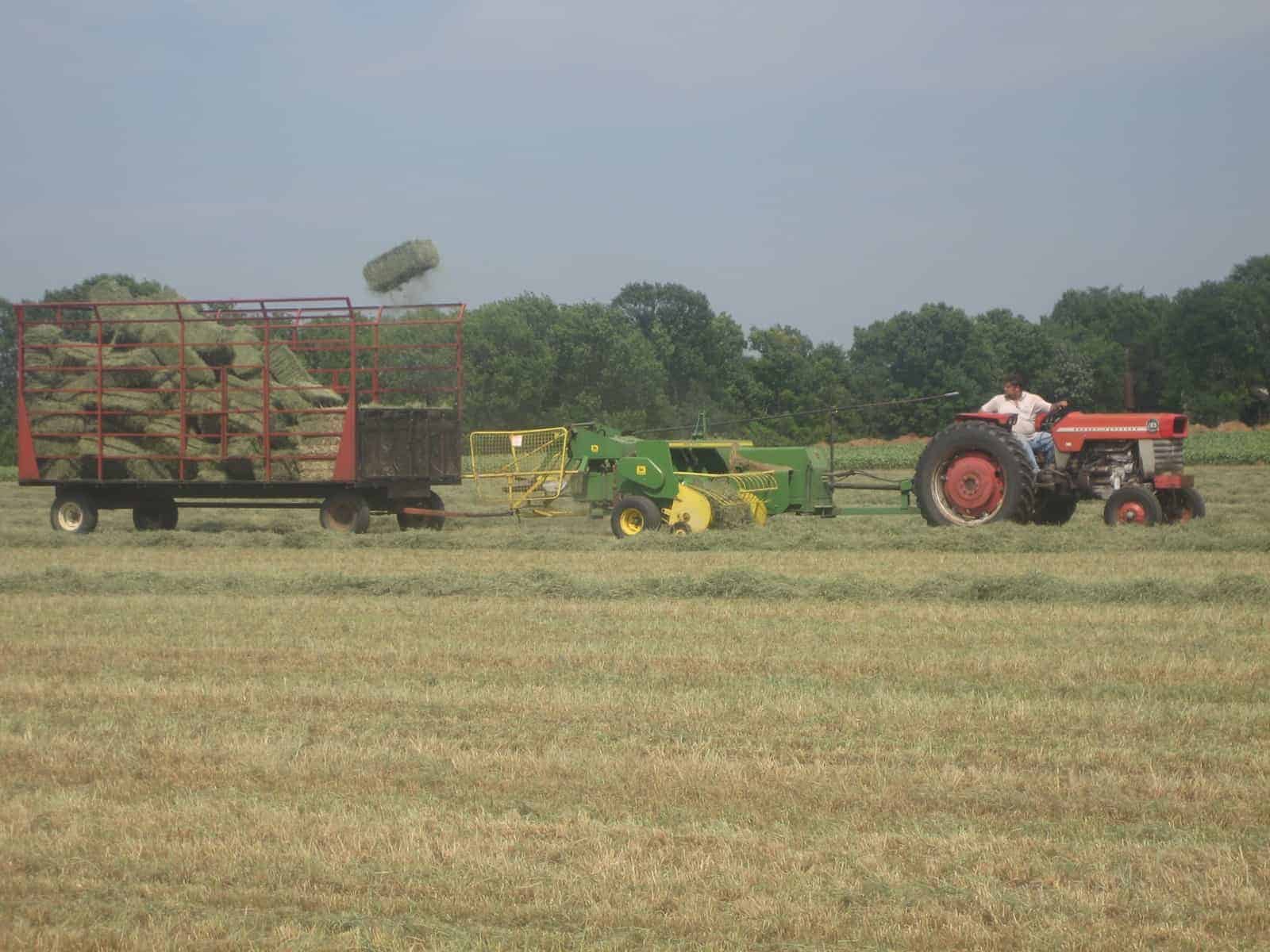
Baling
Hay is compacted into bales and bound with twine by a baler. Think of it as a big hay vacuum that sweeps up loose hay and spits out bales. Different types of balers produce various bale shapes and sizes. | Photo: Courtesy Dr. Krishona Martinson/University of Minnesota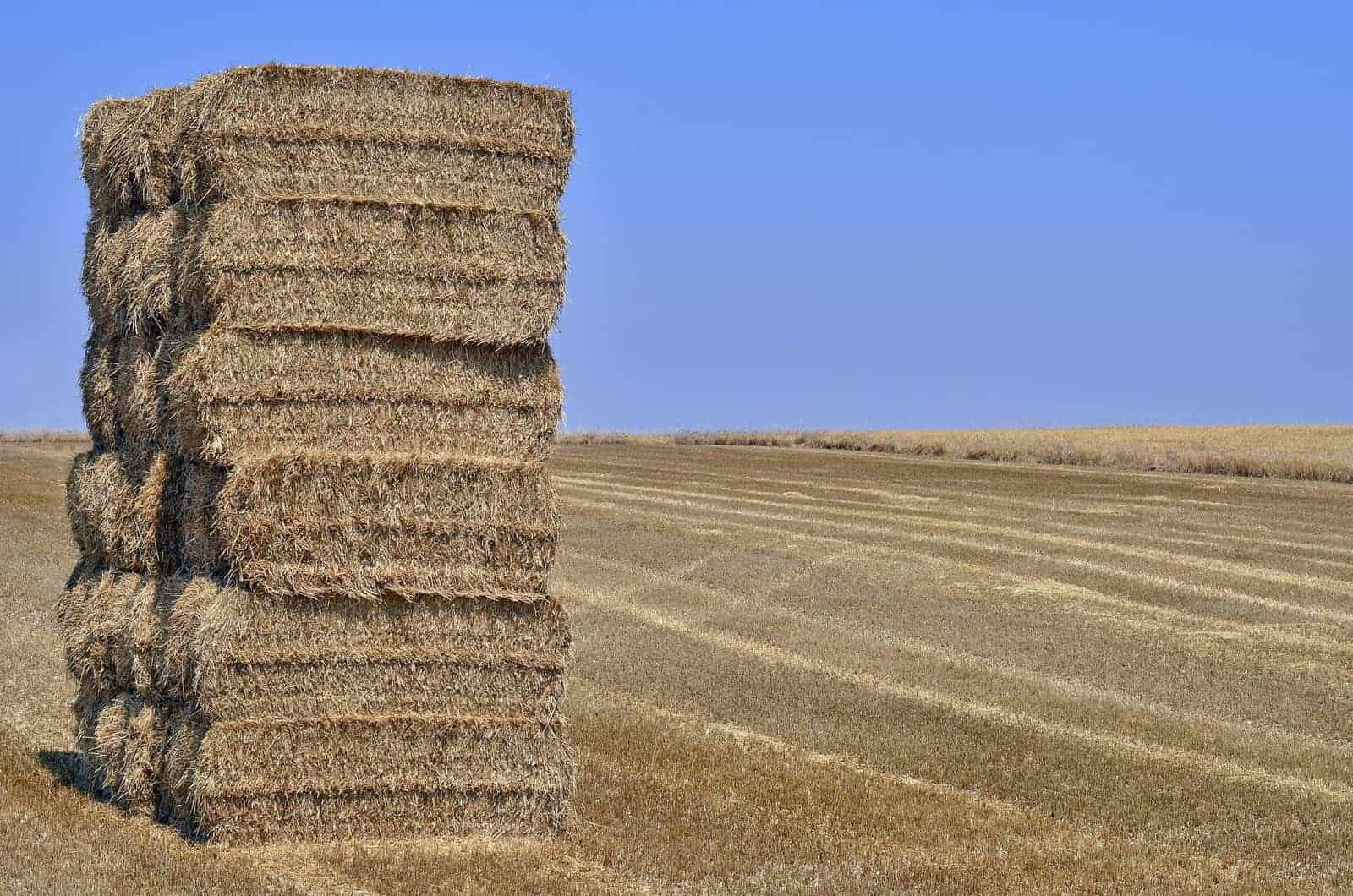
Square Bales
Square bales range from small (around 65 pounds) to large (800 pounds or more). The bales pictured are large. | Photo: Thinkstock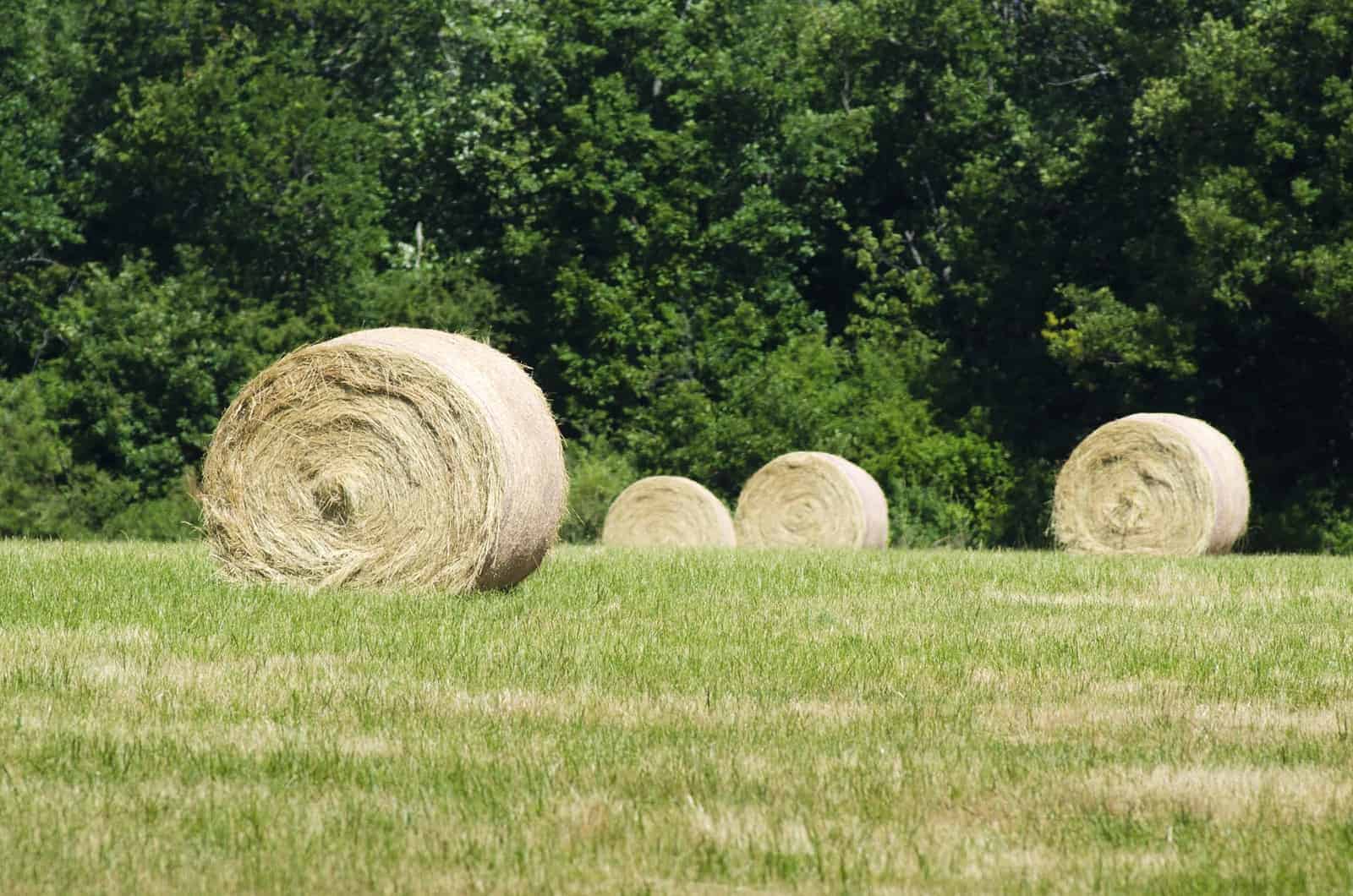
Round Bales
Hay can also be made into large round bales. However, managing and moving large bales requires tractor equipment. Also take care when feeding large bales: They are more likely to contain dead animals, which can potentially contaminate hay with deadly botulism spores. | Photo: Thinkstock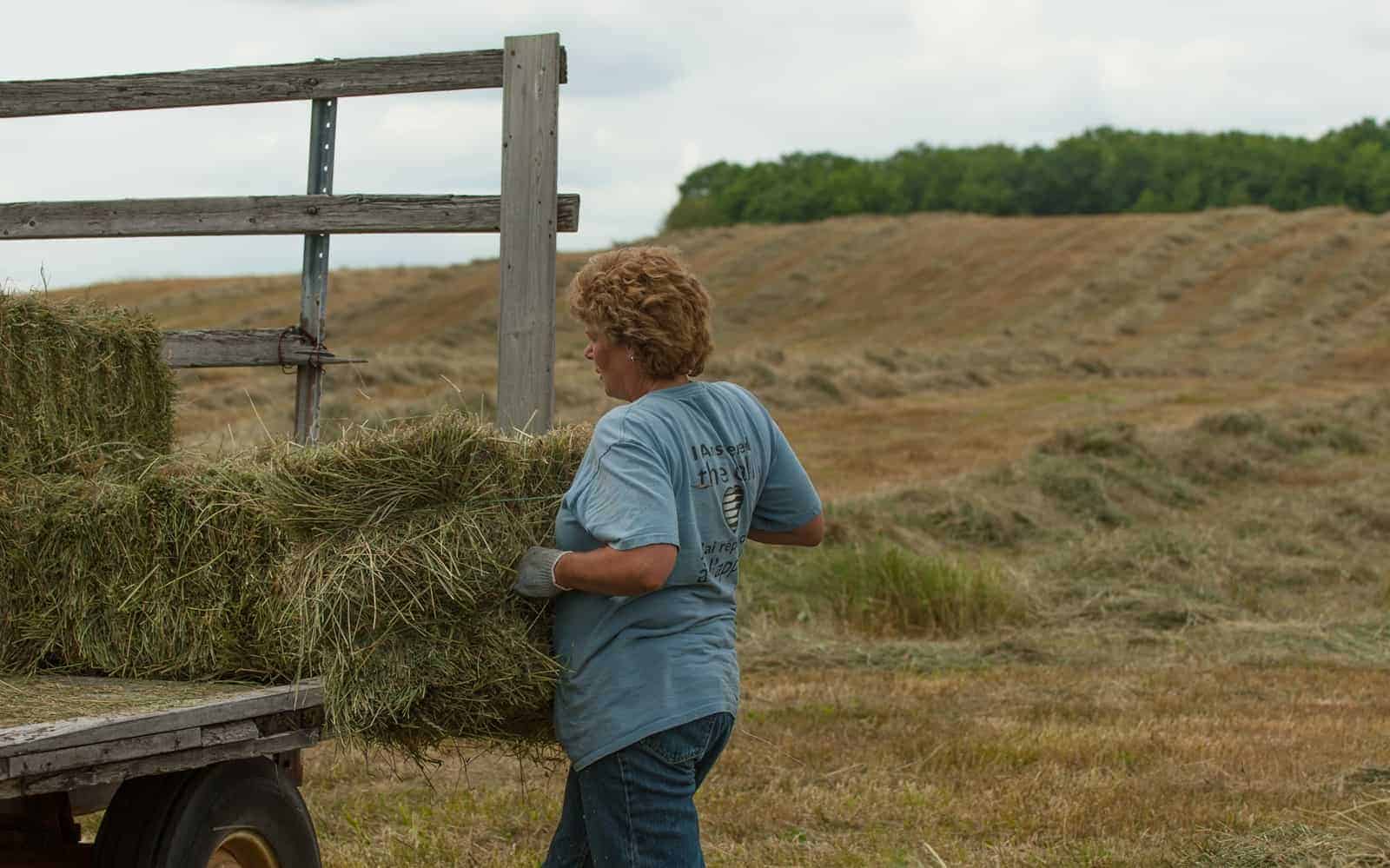
Collecting Hay from Field
Hay making is a labor-intensive process. Often small square hay bales are picked up from the field and stacked by hand. Sometimes horse owners can save money on hay by picking it up in the field before the farmer has moved it to storage. | Photo: Shawn Hamilton/Clix Photography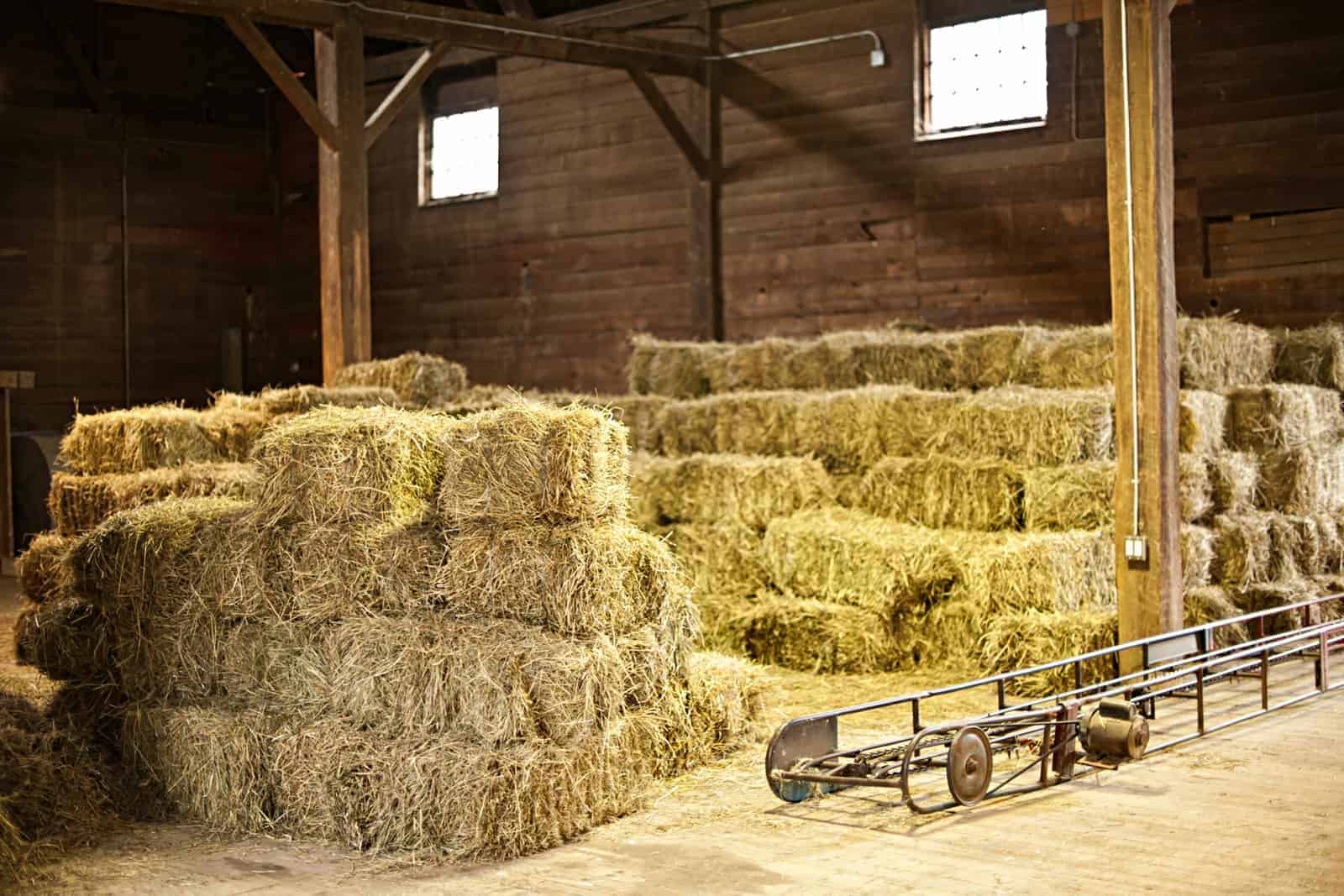
Storing Hay
Once hay is baled, it’s taken from the field and stored in a dry place for sale or use throughout the year. | Photo: Thinkstock
How Hay is Made for Horses
This is an example of hay curing in windrows. Once hay is cut, farmers are in a race against Mother Nature: If hay is rained on as it’s curing, it must be turned and dried again, adding time to the hay making process. This also reduces the hay’s nutritional value and can make it unsuitable for horses.
Share

The Horse: Your Guide To Equine Health Care is an equine publication providing the latest news and information on the health, care, welfare, and management of all equids.
Related Articles
Stay on top of the most recent Horse Health news with


















